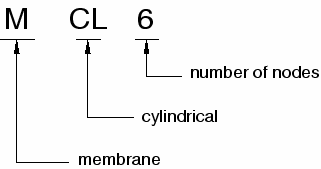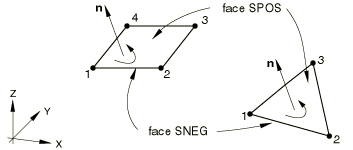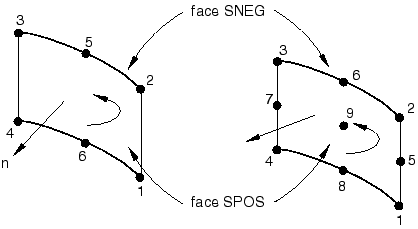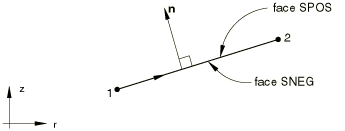Cylindrical membrane elements are available in
Abaqus/Standard for
precise modeling of regions in a structure with circular geometry, such as a
tire. The elements make use of trigonometric functions to interpolate
displacements along the circumferential direction and use regular isoparametric
interpolation in the radial or cross-sectional plane. They use three nodes
along the circumferential direction and can span a 0 to 180° segment. Elements
with both first-order and second-order interpolation in the cross-sectional
plane are available.
The geometry of the element is defined by specifying nodal coordinates in a
global Cartesian system. The default nodal output is also provided in a global
Cartesian system. Output of stress, strain, and other material point quantities
is done in a corotational system that rotates with the average material
rotation.
The cylindrical elements can be used in the same mesh with regular elements.
In particular, regular membrane elements can be connected directly to the nodes
on the cross-sectional edge of cylindrical elements. For example, any edge of
an M3D4 element can share nodes with the cross-sectional edges of an MCL6 element.
Compatible cylindrical solid elements (Cylindrical Solid Element Library)
and surface elements with rebar (Surface Elements)
are available for use with cylindrical membrane elements.





